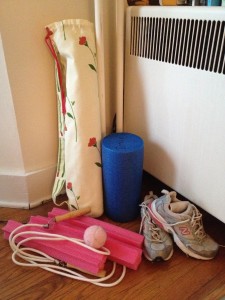by Emily Kate Long

It’s the most wonderful time of the year…Nutcracker season, of course! Nutcracker has never lost its magic for me. The fire was lit inside my nine-year-old soul as I hid under Mother Ginger’s skirt with eleven other curled, beribboned, lipsticked little girls, wanting more than anything to someday sit on the glittering throne upstage center. Fifteen years later, that throne is my domain for half an hour each Nutcracker night until a tiara and a tutu transform Clara into the Sugar Plum Fairy, bringing all her (and my) childhood dreams to life.
That’s the candy coating, anyway. Nutcracker is not a kind ballet, physically speaking. Classical pas de deux are lopsided as a rule, and it sure doesn’t feel great to sit still on foam-covered plywood for thirty minutes before dancing one. Many companies’ Nut runs are a dozen or fifty shows in duration, or involve extensive touring. Injuries are often rampant this time of year. In preparation for all things Nutty, this installment of Finding Balance is an early Christmas present to dancers in Nutcrackers everywhere: the Cross-Training Special (or, How to Survive Nut Without Cracking).
The first (and probably, the most important) step in developing an effective cross-training program is to identify what your general and specific weaknesses are, and to realize that they will (and should!) continually change as your technique and choreography do. For example, most ballet dancers are stronger/tighter on the left side and looser/weaker on the right, and overall our adductors and hamstrings tend to be weak. That’s a general and probably constant issue to address. Specifically, if choreography involves one-sided, one-directional, or very repetitive movement (many releves on the right foot, leg extensions mostly to the front, consecutive press lifts, etc.), building opposite or complementary actions into cross-training can prevent or alleviate symptoms of overuse.
Dancing alone can’t provide the strength to dance well, and it really pays off to be proactive. Time and money are two things most dancers need a little more of, and we can save both long-term (along with our sanity) if we take good care of ourselves to begin with. My routine is one I’ve developed and adapted to meet my particular needs, but it’s always evolving. I’m sharing it not because it’s a generic solution to everyone’s problems, but because of how much I’ve learned about my body and my dancing from developing tools to help myself. [Read more…]




